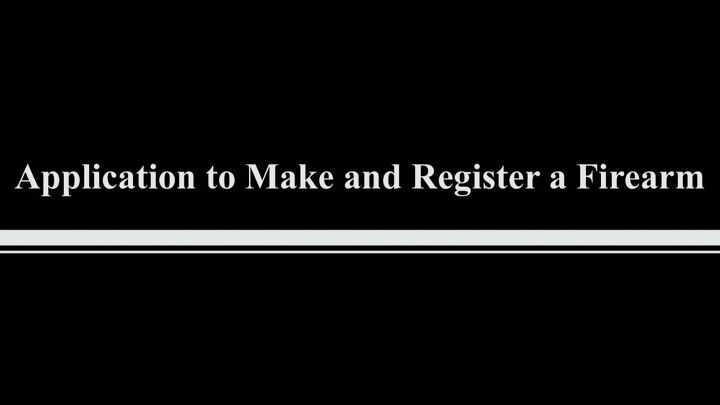Good afternoon everyone and welcome back to TFB’s Silencer Saturday brought to you by Yankee Hill Machine, manufacturers of some of the most high-performing, yet affordable suppressors in today’s market. Last week we got a first look at the PWS BDE 7.62 modular and 3D printed rifle suppressor. We pause our reviews this week to discuss game theory surrounding gun control and Form 1 NFA firearms.
- Diversified Machine Website Seized by the ATF – Form 1 Cans Doomed?
- SILENCER SATURDAY #218: The Kobayashi Maru – The Form 1 No-Win Scenario
- Is the ATF Mass Disapproving Home-Made Form 1 Suppressors?
Today’s article is my response to the unconfirmed news that the owner of Diversified Machine, Chris Ridenour, took his own life a few days before sentencing in a criminal trial for manufacturing and possessing firearms controlled by the National Firearms Act (NFA), without the proper federal firearms license (FFL), taxes paid, and/or approved Application to Make and Register a Firearm as required by federal law. Instead of the emotional response you would naturally expect to see on social media, I wanted to address the the process of making Form 1 suppressors using game theory and logical strategy.
May peace be with Chris and his family.
SILENCER SATURDAY #246: Game Theory and Form 1 NFA Firearms
It sounds odd to refer to the of making an NFA item as a ‘game’, but the process is used to make decisions based on certain parameters. Please note, I an amateur student of game theory and do not pretend to have any expertise in this field.
What is game theory?
Game theory is the study of mathematical models of strategic interactions among rational agents. It has applications in all fields of social science, as well as in logic, systems science and computer science. Originally, it addressed two-person zero-sum games, in which each participant’s gains or losses are exactly balanced by those of other participants. In the 21st century, game theory applies to a wide range of behavioral relations; it is now an umbrella term for the science of logical decision making in humans, animals, as well as computers (wikipedia).
As with any game, it is important to identify the players, the boundaries of the game, and the potential payout results for playing the game. After all, it is impossible to devise a strategy to win without knowing who you are playing and the rules of the game.
The term ‘rational agents’ may seem contradictory in the topic of control of firearms by a government – much of what is decided by government will be seen as irrational by as much as 50% of the population. In this context we’ll use rational to mean that decisions are made based on widely accepted results. For example, a rational person would accept that 1 + 1 = 2.
NFA Form 1 Firearms – The Players
Identifying the players of this game is relatively simple:
- Participant #1: ATF Form 1 Applicants
- Participant #2: The U.S. Government
NFA Form 1 Firearms – The Payout
A payout represents something received as a result of playing the game. In poker, the payout of winning a hand is poker chips or money. But payouts in a game can be physical assets, social status, or any number or real or perceived resolutions.
For Participant #1, there is really only one goal of the Form 1 game: to be legally allowed to build their own suppressor, short barreled rifle, or any other NFA controlled firearm. For Participant #2, the goal is to keep applicants from making their own NFA firearms.
Obviously, Participant #2’s desired end result of the denial of the making by Participant #1 is debatable. As evidence to support this claim, I offer that one of the boundaries (discussed below) as originally set forth in 1934, is the $200 application tax required of Participant #1 to even play the game. A $200 tax in 1934 is analogous to a $4,400 tax in 2022. While that dollar figure is not completely unobtainable, it does represent approximately 7% of the median pre-tax income of an American family in 2022. Of course, the NFA tax has remained $200 for the last 88 years and inflation has made it more accessible to consumers at all levels.
The point is, a $200 tax in 1934 was in all practicality, a ban on suppressors and other NFA controlled items because so few of the population could afford to spend that amount on a discretionary tax.
Participant #2 would argue that the registration process and the corresponding $200 tax is a boundary of the game with the payout being an increase public safety. However, the fact that anyone with simple tools and $20 to spend at a hardware store could make an NFA item without having to play the game at all, appears to make this theory less likely. There is also the fact that most firearm related crime occurs with cheap concealable handguns rather than larger, more expensive suppressed firearms. Support for this data can be found in the FBI’s Uniform Crime Report and other metrics collected on crime and firearms use.
NFA Form 1 Firearms – The Boundaries
The requirements to play the game are as follows. We will assume that Participant #1 lives in a state that allows the making and possession of NFA items.
Participant #1:
- Completes an application packet that includes several complexities outside of filling out forms (photographs, fingerprints, background check).
- Pays the $200 tax.
- Receives approval or disapproval.
Participant #2
- Processes the application packet and receives the $200.
- Decides to approve or disapprove the application.
- Notifies Participant #1
Because of all the application requirements, the boundaries of the game are heavily weighted towards Participant #2. This is especially true in this game because even if Participant #1 wins and receives the payout, he or she must use other skills and materials to make the actual NFA item. Remember, the payout is the legal authority to make an NFA item, not the materials to build the item or the NFA item itself.
In addition, Participant #2 does not need Participant #1 to play the game. If the government relied on the $200 as a source of income, it would have been considered a payout, and would alter the objectives of the game. As it stands, the total amount of revenue of all NFA taxes – both transfers and making tax payments – is $22.6M or .000000497% of the revenue collected by the U.S. Government in 2021.
There are a subset of rules that place additional burdens on Participant #1 that may or may not be relevant to the overall game. The fact that some parts of NFA firearms require the game to be played multiple times to obtain additional approvals. And some parts of the rules of the game have changed that would require Participants #1 to play the NFA game for items that did not previously require approval. I surmise that these subsets and rule definition changes dissuade people from playing the game entirely.
Of larger concern, Participant #2 has some control over the boundaries of the game being played. Although the basic rules of NFA ownership were set in a handful of laws starting in 1934, agencies are often allowed to interpret the underlying regulations as they wish.
NFA Form 1 Firearms – Strategies
Because the outcome of the process means that if one participant wins, the other participant loses, it is a zero sum game. In simple terms, there can only be one winner and one loser. Either Participant #1 wins by receiving the approval to make an NFA item, or Participant #2 wins and no approval is given and an NFA item is not allowed to be created legally.
On the positive side, there can be thousands of Participant #1s playing the same game without effecting the outcome of other players in the same category. For example, there are not a limited amount of Form 1 approvals that can be issued every year. Also, if the application is submitted with the correct qualifying information, Participant #2 is required to give Participant #1 the expected payout.
However, because Participant #2 can dictate the subset of rules underlying the boundaries of the game, Participant #1 is playing a game that is controlled by one of the players. Participant #2 can also dictate the overall logistics of the game: making the length of play stretch out past a year, providing an inefficient platform to play the game (eForms and paper forms), and allocating a limited amount of resources for Participant #1 to receive a notification of approval or disapproval.
Understanding the game, its rules, and its participants, we can pick from a two strategies.
- Play the game. Receive the approval. Participant #1 wins.
- Do not play the game. Do not receive the approval. Participant #2 wins.
Because the payout is receiving an approval and not making the NFA item itself, breaking the rules of the game comes with potential penalties. In this case, making an NFA item without staying within the boundaries could result in 10 years in prison and other constitutional rights being revoked.
From my perspective there are only two real choices: playing the game and winning or declaring that the game is unfairly weighted in favor of Participant #2, flipping the board over and designing a new game that is fair for Participant #1. Unfortunately, in the grand scheme of things, Participant #1 players are dramatically outnumbered by Participant #2 players, leaving the chance for playing a different game (changing the laws) very small.
Thanks for reading. Be safe, have fun, and we’ll see you back here next weekend for another Silencer Saturday.
 Your Privacy Choices
Your Privacy Choices

